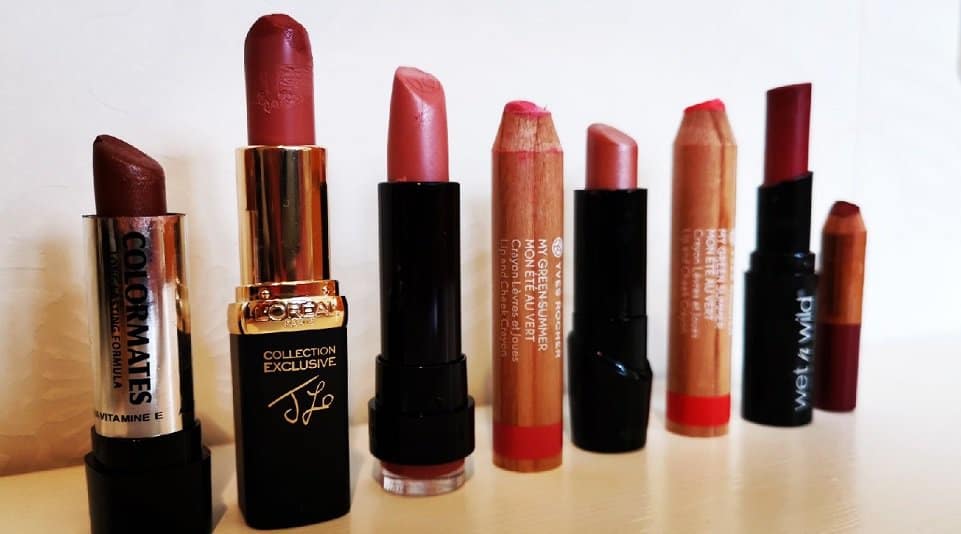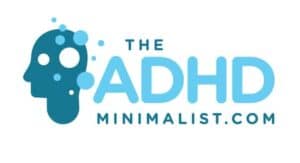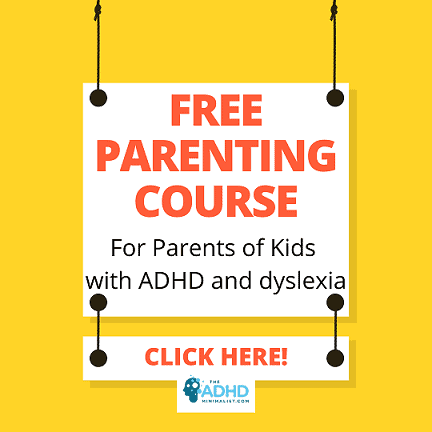
It’s worth a little time, effort, and money to make sure your child and others are safe!
Worldwide consequences follow cultural patterns of consumption. Do we ask ourselves how many chemicals, pollutants, and toxins are in the products we buy? Do we care if products damage ourselves and others? Kids with ADHD are more likely to have allergic rhinitis, asthma, atopic dermatitis, and allergic conjunctivitis than their non ADHD peers,1 and they have higher percentages of constipation, fecal incontinence,2 and bed wetting.3 Do research before purchasing products for your child’s room. Merchandise that aggravates ADHD isn’t worth it. Buy items that allow your kids to thrive.

Tips for Creating a Toxin-Free Bedroom
Textiles
Problem: Pesticides, Insecticides, Chemicals, Toxins, and Dyes
Conventional cotton is known as the ‘’Dirtiest Cop On Earth’’ cotton farmers collectively spend 2 billion dollars on pesticides and consume 16% of insecticides used worldwide each year.4 It’s been estimated that over a million animal deaths4 occur every year caused by these contaminants. Yet we turn a blind eye to the repercussions these toxins have on humans.
Non Organic textiles contain toxins, excess dyes, and chemicals that may cause skin irritation and itchy rash. There’s a direct correlation between specific skin allergies and chemicals used by nonorganic farmers.4 Many suffering from these skin conditions report dramatic improvement after switching to organic textiles and clothing. Because kids with ADHD are prone to skin allergies it’s best to go organic.
Choosing organic isn’t solely about what’s best for your child. Conventional cotton farmers in developing countries have high rates of cancer.5 and the chain of damage doesn’t stop there. Cotton is moved to textile factories where workers are likely to have miscarriages and cancer.4 If you’re not convinced to go organic yet, consider the consequences for the earth. Organic cotton produces 46% less CO2e than conventional cotton;4 it uses considerably less water because organic farmers rely mainly on rainwater for their sustainable crops.6 and the soil and air aren’t polluted with insecticides and pesticides. It’s excellent that choosing the best for our kids also means choosing the best for others.
Take action
- To avoid toxins go organic.
- Wash new nonorganic textiles and clothes at least twice before letting your child use them. Often toxins and chemicals disappear in the wash but check your water source, shallow wells may get contaminated.
- Second-hand textiles. Organic products are more expensive. If your budget is tight, buy used textiles; Second-hand textiles are washed and most likely toxin-free. Used items are good for your wallet, good for your kids, and good for the environment.

Children’s Toys and Products
Problem: Lead
‘’Lead is a cumulative toxicant that affects multiple body systems and is particularly harmful to young children.’’ – The World Health Organization7
On August 14, 2008, The Consumer Product Safety Improvement Act (CPSIA) was signed into Law.8 This law established lead limits for children’s products and required lead testing before items could be sold. The CPSIA lowered lead limits over three years and banned phthalates in children’s toys and equipment. In February 2009 (In the USA), children’s products were allowed 600 parts per million (ppm). In August 2011, the lead content of toys and children’s products was lowered to 100 ppm. Products like bicycles and other items that couldn’t meet these standards were allowed exceptions if they didn’t pose health risks. (Bicycles = 300 ppm.8) It’s a relief that toys and children’s products in the USA are now tested before sale8 because lead poses serious health risks for kids.
The only way to prevent Lead poisoning in children is to ensure that Lead never enters their bodies. Once children have elevated blood lead levels, it’s too late to avoid the detrimental effects on the developing brain.9 Parents should discard or test toys bought before 2011.
Toys most likely to contain lead if made before 2011 (in the USA).
- Painted toys
- Toy jewelry
- Varnished toys
- Old toy tea sets
- Teething products.
- Soft plastic toys
- Extremely cheap toys
- Antiques
- Metal toys
- Recalled toys. The United States Product Safety Commission lists recalled items on its website. Many toys and children’s products are recalled for lead.10
Licking, swallowing, or chewing on lead products may lead to lead poisoning. Touching products containing small amounts of lead usually won’t harm kids. If you are worried about your child’s lead exposure buy a testing kit. If you find lead at home test11 your child’s lead levels.

The ADHD/Lead relationship.
Research suggests Lead can be a contributing factor to some ADHD cases. Researchers looked at 18 previously published studies on lead, they found that in 16 of 18 studies, blood lead levels had a significant association with ADHD13. Their research suggests screening children, as young as nine months, for raised blood lead levels. They hope, catching children exposed to lead early will prevent further exposure, save kids from lead poisoning, and possibly reduce ADHD cases.
Lead can be found in many lipsticks, so check your lipsticks and make sure you’re not giving your kids poisonous kisses! The Kiss of Death! Lead Lipstick can cause ADHD in children!
According to EPA12 (The United States Environmental Protection Agency), Low Lead Levels in a child’s blood can cause:
- Behavior and learning problems
- Lower IQ and Hyperactivity
- Slowed growth
- Hearing Problems
- Anemia
A child’s ingestion of Lead in rare cases can cause the following.12
- Seizures
- Coma
- Death

Paint
Problem: Lead
Egg tempera paint is natural, organic, and easy to mix. Since lead paint12 can contribute to ADHD symptoms and two of my children have ADHD, I feel better knowing my kids can lick the walls without ingesting toxins13.
In South Africa14, studies found that half the homes they tested had lead paint. Unexpecting people bought lead paint just a few years ago from South African home decorating stores! The extent of the lead problem was discovered when a little girl ate paint chips, and her health deteriorated. If you live in countries where rules for products containing lead14 aren’t strictly enforced, do yourself a favor, buy all-natural powdered paint pigments, and mix it yourself.15
Check your child’s room for lead if you own an older home. Many countries banned lead paint during the last century, but to be sure it’s essential to check local laws. For example, homes in the USA built before 1978 may be decorated with lead paint, but homes built before the 1930s in Sweden are at risk. Paint chips from lead paint become toxic dust inside the home or contaminated soil outside. If you’re in doubt, test for lead.
Environmental toxins
Problem: Pesticides
I’m only addressing what directly affects kids’ bedrooms. Crop dusting is common where I grew up. As a child, no one told me (and perhaps no one knew) that running out and watching planes dust crops around our house wasn’t safe.
I’m not an expert on crop dusting, and I hope their substances are better these days. Still, those from my generation will tell you there’s a correlation between being outside during crop dusting and getting sick afterward.16 and the long-term effects of pesticides are much more devastating than being occasionally sick from direct exposure. If you live near fields, keep your child’s windows shut during crop dusting!
A Healthy Happy Childhood is Worth Protecting!
I wish countries across the globe would see the necessity of protecting safe childhoods and unite in rethinking insecticides, pesticides, and environmental toxins. All children deserve the chance to go to school and have a fun healthy worry-free childhood! Maybe we’ll get there someday.
Check out my blog posts on how clutter decreases ADHD Symptoms!
How Minimalism can Reduce ADHD Symptoms
How to Start Living Minimally With an ADHD Family
Citations
2. https://www.ncbi.nlm.nih.gov/pmc/articles/PMC4530301/#:~:text=Children%20with%20ADHD%20are%20significantly,have%20constipation%20and%20fecal%20incontinence.
3. https://www.ncbi.nlm.nih.gov/pmc/articles/PMC2794242/
4. Swedish Linens, (2017) ‘’The Harsh Truth: Organic vs. Conventional Cotton’’
https://www.swedishlinens.com/blogs/news/organic-vs-conventional-cotton
5. Singh, Z., & Chadha, P. (2016). Textile industry and occupational cancer. Journal of
occupational medicine and toxicology (London, England), 11, 39.
https://doi.org/10.1186/s12995-016-0128-3,
https://www.ncbi.nlm.nih.gov/pmc/articles/PMC4986180/
6. https://textileexchange.org/quick-guide-to-organic-cotton/?gclid=CjwKCAjwvuGJBhB1EiwACU
1AiX-ibWZQrkwfYgvyHsBbTwZP4jW1hNIFYfSHQm-3Qb_8Sd4q4QgPPBoC2KwQAvD_
BwE
7. https://www.who.int/news-room/fact-sheets/detail/lead-poisoning-and-health#:~:text=Lead%20is%20a%20cumulative%20toxicant,where%20it%20accumulates%20over%20time.
8. 44, Consumer Federation of America, ‘’CPSIA and Lead Fact Sheet’’
https://consumerfed.org/pdfs/CPSIA-and-Lead-Fact-Sheet-8-5-13.pdf
9. Lidsky, Theodore l. Schneider, Jay S. (2003) ‘’Lead neurotoxicity in children: basic
mechanisms and clinical correlates,’’ Oxford Academic BRAIN, 126(1) 5-19,
https://doi.org/10.1093/brain/awg014
https://academic.oup.com/brain/article/126/1/5/299373
10. The United States Consumer Products Safety Commission, ‘’Recall List,’’
https://www.cpsc.gov/Recalls?combine=lead&=Apply&field_rc_date%5Bdate%5D=&field
rc_date_1%5Bdate%5D=
11. ‘’Childhood Lead poisoning prevention,’’ Centers for Disease Control and Prevention,
https://www.cdc.gov/nceh/lead/prevention/sources/consumer-products.htm
12. EPA ‘’Learn About Lead’’ United States Environmental Protection Agency,
https://www.epa.gov/lead/learn-about-lead
13. Daneshparvar, M., Mostafavi, S. A., Zare Jeddi, M., Yunesian, M., Mesdaghinia, A., Mahvi, A.
H., & Akhondzadeh, S. (2016). ‘’The Role of Lead Exposure on Attention-Deficit/
Hyperactivity Disorder in Children: A Systematic Review.’’ Iranian journal of psychiatry, 11(1), 1–14. https://www.ncbi.nlm.nih.gov/pmc/articles/PMC4888135
14. Kessler, Rebecca. (2014) ‘’Lead-Based Decorative Paints: Where Are They Still Sold—and
Why?’’ US National Library of Medicine National Institute of Health, 122(4) 96–103, doi: 10.1289/ehp.122-A96 https://www.ncbi.nlm.nih.gov/pmc/articles/PMC3983718/
15. Lidsky, Theodore l. Schneider, Jay S. (2003) ‘’Lead neurotoxicity in children: basic
mechanisms and clinical correlates,’’ Oxford Academic BRAIN, 126(1) 5-19,
https://doi.org/10.1093/brain/awg014
https://academic.oup.com/brain/article/126/1/5/299373
16. https://www.health.state.mn.us/communities/environment/hazardous/docs/pdriftpatient.pdf


